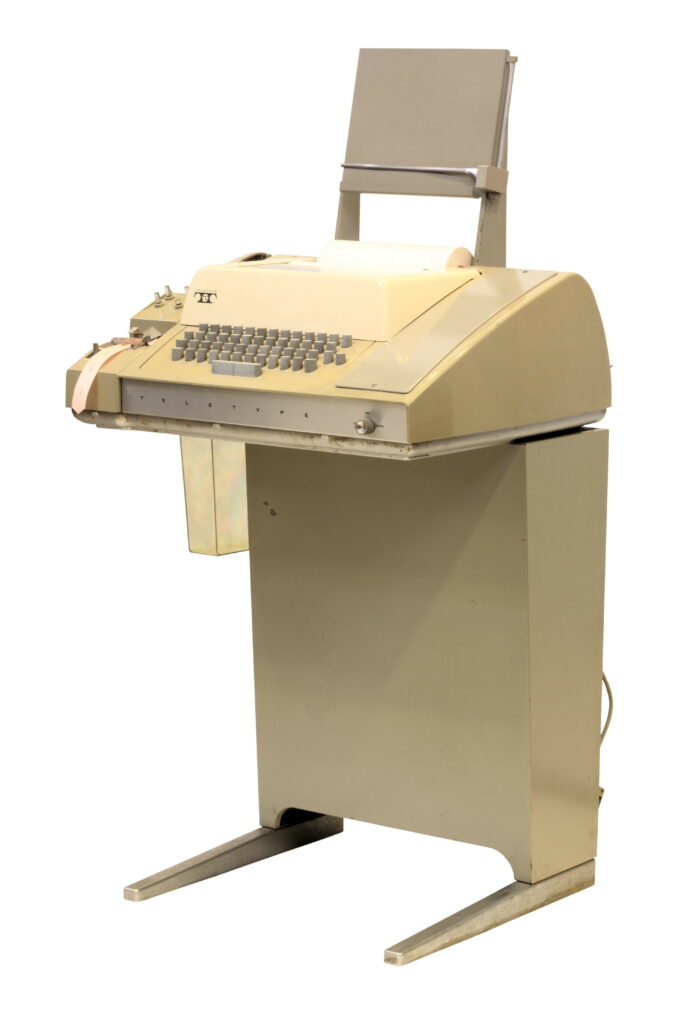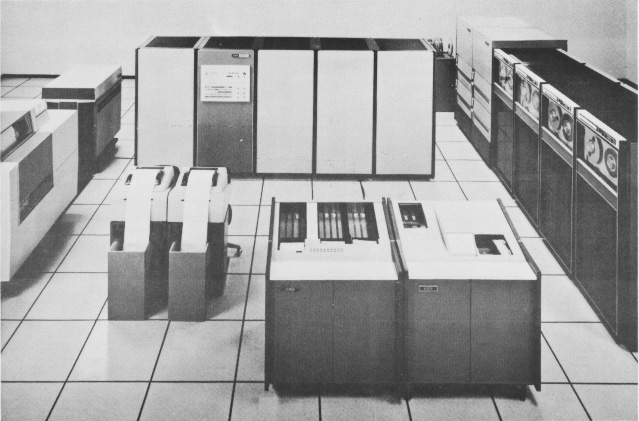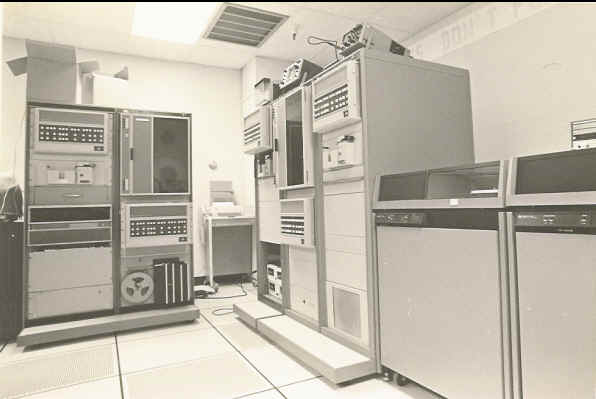The 1971 Star Trek fan game predates all modern franchises, has been ported across dozens of codebases, and still receives new ports and iterations to this very day. It laid the groundwork for PC gaming as we know it today, from installation onto your own terminal to getting your hands dirty doing mods of your own. Yet we hardly talk about it, because it isn’t attached to any official source monetising it. It’s a game that has defied expectations. Because it’s not a game for making a company quick cash. It’s a game that has first and foremost always been for gamers first.
1971 was a pretty rough year to be a Star Trek fan. The series initial three season run had come to an end in 1969 and it wasn’t looking likely to return due to poor ratings at the time.
So what did Sci-fi fans have to fall back on? Practically nothing in the media landscape. All they had was the budding promise of the coming computer generation. This came in the form of gigantic mainframe computers in their universities. That was the case for Mike Mayfield, a final year Highschooler who had in his words “managed to “use” (read “steal”) an account on a Sigma 7 at University of California, Irvine”.
This admission came in the form of a letter back in 2000, which you can read in full here, and is a primary source for this story.
The Sigma wasn’t a PC either, this was a fucking big boy Mainframe that could do so much sweet fuck all. Mayfield interfaced with it via a ASR-33 Teletype terminal.
These days when we think of making games compatible for things it generally means making it mobile friendly and removing most of the polygons so it can run on a Nintendo Switch. For Mike it meant coming up with a game that you could also play off a printer because CRT’s weren’t always a given.
At the end of the day the game he was fiddling with was saved on paper punch tape which could be loaded at a blistering 10 characters a second. What he was working on was Star Trek, and I think you could possibly argue, a roguelike a decade before Rogue came out. It features a randomly generated galaxy map which is navigated turn by turn in ASCII. It has permadeath and resource management.
Gameplay features the Enterprise scanning and hopping around hunting down Klingons and killing em all before the time runs out. Due to the memory and save restrictions Mike kept the game tight. But making the game procedural at the same time gave it solid replay value if you wanted to burn through reams of paper. How many god damn trees were lost playing this game? Imagine a time when your refresh rate was based on how fast your printer was.
Through a series of boring events he came into contact with HP, who asked if he’d like to work on a version of this game on their own HP 2000C’s. The original version he was working on got ditched like a bag of kittens into a river and the HP version is the one we have record of today. He published the game under the company name Centerline Engineering, which never existed but sounded cool to him as an 18 year old. Hot tip, publish games under your own name!
HP published it in their public domain software catalogue, which was a physical book of programs and from there people republished it in newsletters and then eventually a port of it made it into a book called “101 Basic Computer games”.
There was no copy pasting either, if you wanted to play a game you had to write it all out yourself onto whatever machine you could get your hands on.
Now here’s where the magic happens. When you’re writing out an entire game you’re gonna tweak it. People added new systems and the game became a chinese whisper of a program, morphing over time. Some had to take greater leaps because there were so many different ecosystems that they had to do entire ports. Some, like Aron Insinga, were driven to make these ports just so students weren’t blasting the phone bill playing it remotely.
“Back in the 1970s there was a computer center in Delaware that was used by the high schools in the state and was staffed by students. We had the 2nd RSTS-11 system that DEC sold. Kids were using the Project DELTA Teletype and DataPhone at their school to make long distance calls to a time-sharing system at the HP facility in Avondale, PA. They were using the system for hours to play this Star Trek game and the phone bill was a big problem. I was told that it would help a lot if I could get it to run on our RSTS-11 (PDP-11/20) system at Project DELTA.”
Every message board I’ve found on the subject have old dogs listing the rigs they played it on, and mentioning just how ubiquitous it was. You even get messages like this one found here.
“Is this the version written by Don and R Michael Grant? If so, those are my brothers. They wrote this for my 11th birthday.”
Isn’t that cute thinking some older brothers had to smash out a game for their little sibling?
This little game fragged PC gaming to such a degree that we’ll never truly be able to measure how much of an impact it had. Because it was never consistently distributed under the same name or publisher it will never swagger around like Elite saying it’s one of the oldest franchises, or like Tetris saying it’s the most ported. Elite actually got inspiration for their galaxy generation from Star Raiders which In turn had been inspired by Star Trek.
The sheer number of different versions of this game is mind boggling. The task of finding out how many ports, clones, and spinoffs it’s had is a massive task that would require spreadsheets. Some have tried. I started to chart a timeline myself but it quickly started to look like one of those paranoia murder walls. And even then, most versions never left their owners computers.
The version most people remember, and I conspicuously didn’t mention in my video review is Super Star Trek adapted by Bob Leedhom. This version is the closest the game ever got to an official sequel. Although how you claim that title for doing anything other than getting there first for something so open source I’m not entirely sure. I didn’t dedicate a large section to this because I felt like most retellings of this story tend to eclipse the original game with the ins and outs of Super Star Trek’s improvements.
A very lovingly crafted graphical 25th anniversary version of Super Star is available on Itch.io here. Leedhom even gave it his blessing in the comments section. “Great to see that my game is still alive! I jumped in and started playing, and only after I’d bumped off a bunch of Klingons in several sectors did I decide to scroll down and read the instructions (which I apparently did not need). Thanks so much for this! My late nights back in 1978 were worth it!”
This absolutely confirms Leedhom Googles himself occasionally. Hi Bob!
My personal favourite “current” version is one made in HTML5, which tries to stick to the original but give it an interface and mouse compatibility that makes it a breeze for modern users.
The freshest port I know of is an entirely web based version which received a new push on github just two weeks ago (November 2023). Available here.
Personally I came in first contact with this game as a kid via Visual Star Trek on a disk I literally found in someone’s trash. The game looks like a petri-dish simulator but It’s actually a lot of fun. Apparently nobody even knows who made this game, like so many of its peers it just seemed to spring out of the ground like a newborn dwarf.
The kids of the 70s needed no encouragement making videogames but how many budding programmers started their careers copying this game out? In some ways it’s the bones of a game that inspires you to add more. It imbues you with the hacker spirit, the same one that gets modders to add more fluff to Minecraft.
Doing a game of the year award for anything predating the 1970s is like holding a miss universe contest for amoebas wiggling around in the primordial soup. So I’m drawing the line for the big rathole at 1971. That Makes this game the first chronological winner of the golden ratty award. Your impact may never truly be measured. But in my heart your game helped pave the way for all the rest.






0 Thoughts on How The 1971 Star Trek Is the Proto-Roguelike